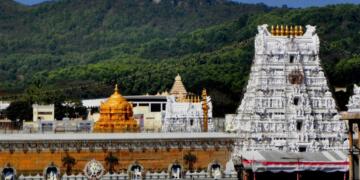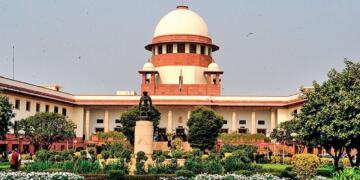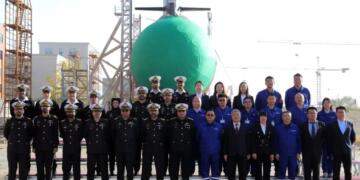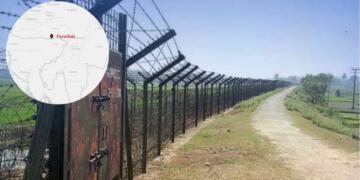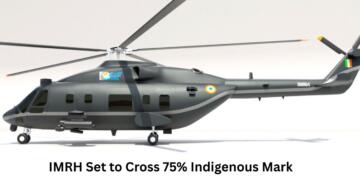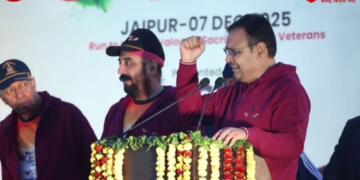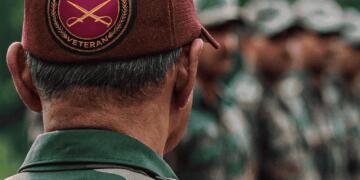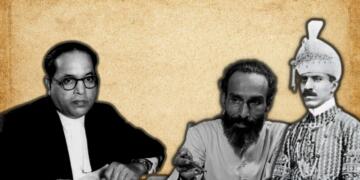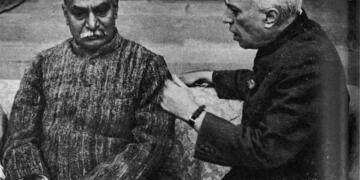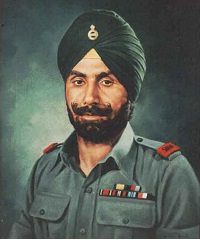Honorary Captain Karam Singh was born at Bhaliawala village in Punjab on September 15, 1915. He showed an early propensity for the army, mostly due to his uncle, who served as a Junior Commissioned Officer (JCO) in the Indian Army. Though he was sent to school at the age of six, he was not as proficient with academics and was then sent out to work at the farm. However, he did not have an interest in agriculture, and most people viewed him as a spoilt child who was lost without direction. Despite all this, Karam Singh was very thirsty for adventure and dreamt of joining the army. So he actively showed an interest in wrestling and other such activities.
Karam Singh got the chance at a life of adventure in 1941, at the age of 26, when the Second World War was underway. A recruiting officer came to his village and Singh jumped at the chance of joining the Indian Army. He underwent his basic training at the Sikh Regimental Centre in Naushera and soon was attached to the first Battalion of the Sikh Regiment in August 1942. While serving in the military, Singh’s officers quickly realised he had all the makings of a leader who could make quick and decisive decisions in emergencies. His zeal and passion for the work stood him in good stead, and soon he became one of India’s most respected soldiers.
Karam Singh was first tested during World War II when his unit was deployed to the Arakan front to face Japanese forces in Burma. He had risked his life many times during the fierce battle that ensued, fighting on the Htinshbyin, Buthidaung, and Manipur fronts. He was wounded four times during the campaign, but his courage and tenacity did not waver. For his exceptional gallantry, Singh was awarded the Military Medal by the British Government on 14 March 1944. This marked him as a soldier of extraordinary mettle. Later, he was promoted to the rank of Lance Naik.
It was only during the Indo-Pak War of 1947–48 that Karam Singh really secured his place as a war hero. The circumstances in the state had turned dangerous in October 1947, as Pakistan was sending raiders to invade the state of Jammu and Kashmir. By October 1948, the Indian Army had pushed the enemy back beyond Tithwal, a strategically important town in West Kashmir. The first Battalion of the Sikh Regiment has been deployed to counter the enemy threat from Tithwal. Only Karam Singh was deployed to guard a vital outpost situated on a hilltop with only three comrades. The enemy side, despite its overwhelming superiority, continued to attempt to capture this position, for this was obviously an important point in penetrating the Indian defense line.
On 13th October 1948, the battle for the Tithwal outpost began. Despite being heavily outnumbered—by a ratio of approximately 10:1—Lance Naik Karam Singh and his small team displayed remarkable resilience. The enemy came in waves, and in the first wave, one of Singh’s comrades got injured. Undaunted, Singh and his remaining men fought back with ferocity, pushing back the enemy and successfully holding their ground.
The scenario became more desperate as the battle continued. The ammo had almost run out, and the bunkers were very far behind Singh. His mates were struggling to their final end because of their wounds, and Singh was bleeding from multiple wounds. Understanding that the outpost could no longer be held under such conditions, Singh decided to withdraw himself. He evacuated the injured comrades into safety amidst such heavy artillery fire and close combat with the enemy by using hand grenades in a heroic act of bravery. In the process of his withdrawal, Singh cleared two enemy positions, further demonstrating his utmost bravery and tenacity.
Even when wounded severely, Singh refused to withdraw from the battlefield. He joined another section of his platoon where, yet again, there was a fierce skirmish. Hit by another bullet, he led his men from the front. He encouraged his troops and tended the wounded. His presence kept the morale of his troops high while they came under constant attacks from the enemy, who mounted four more offensives throughout the day.
By the afternoon, the enemy, with heightened ferocity, launched a fifth attack. In a decisive moment, Singh saw two enemy soldiers advancing through a trench. Not having time to engage them over his own guns, he boldly burst out of his position, bayoneting the two men and rushing back to his post immediately. This heroic act broke the enemy’s morale and the attacking forces retreated in dismay at the fierce resistance put up by Singh.
Although the enemy continued to launch two more attacks in the later hours of the day, they were unable to break Singh’s defense. After hours of relentless fighting and heavy shelling, during which more than 3,000 shells were fired, the enemy called off their offensive and withdrew. The Tithwal victory was a very important one, and Karam Singh’s act was crucial in saving the town from falling into enemy hands. His bravery in the face of overwhelming odds perhaps was one of the most remarkable displays of courage in the entire Jammu and Kashmir campaign.
For his unparalleled bravery during the Battle of Tithwal, Lance Naik Karam Singh was awarded the Param Vir Chakra, India’s highest military honor, making him the first non-posthumous recipient of the prestigious award. Singh was also the only Indian soldier to receive both the Param Vir Chakra and the Military Medal, a testament to his extraordinary valor and dedication to his country.
He was a Subedar and Honorary Captain of the army. Karam Singh expired on June 20, 1993, when he was at the age of 77 years. He will remain in the pages of history as a true hero—a soldier—because of his guts, leadership qualities, and dedication, saving innumerable lives and motivating generations. To this day, the name Karam Singh lives and forms one of the most worshiped personalities of the history of Indian armed forces.


